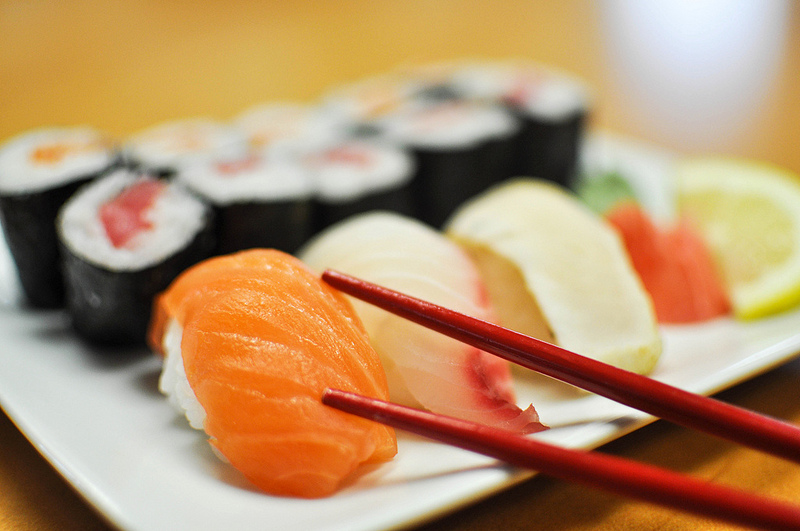By paying top dollar for milk and sourcing within 15 miles of its creamery, Jasper Hill supports an entire community.

July 9, 2013

Tonight, like many Americans, I might decide to buy my favorite seafood filet from my local fishmonger to cook for a delicious dinner. But first I wonder where this fish came from. How was it caught? When was it caught? Can I be absolutely sure this fish is actually what it says it is on the label?
If you go to your favorite steakhouse and order the filet mignon, the restaurant will most likely know where the cow was raised and slaughtered and how the meat was processed, and they may even be able to give you that information. Many grocery stores can track your apple or tomato back to the exact farm where it was grown. Unfortunately, however, when it comes to seafood, most consumers cannot get that detailed information.
Consumers in the United States are routinely provided with little information about the seafood they eat, including its exact species and where, when and how it was caught. Our seafood laws generally do not require that labels include this information, nor do they require full traceability back to the point of origin. Although U.S. fishermen have to record where, when, and how a fish was caught, these same requirements generally do not apply to foreign importers, and whatever documentation exists does not always follow the fish through the complex route it takes to end up on your dinner plate. To complicate the picture, although more than 90 percent of seafood consumed in the U.S. is imported, the FDA inspects only 2 percent of these shipments, and less than 1 percent of that is specifically inspected for fraud. All of this means that there is ample opportunity for mislabeling in our seafood supply chain.
Seafood’s lack of traceability puts both consumers’ wallets and their health at risk. In February, Oceana revealed that one-third of seafood samples we tested in grocery stores and restaurants around the U.S. were mislabeled. These samples from commonly-swapped species like red snapper, grouper, or Atlantic cod, were often completely different types of fish—fish that are cheaper, less sustainable and potentially harmful to your health. For instance, escolar, a snake mackerel species commonly mislabeled as white tuna in sushi restaurants, can cause severe digestive issues and is banned in Italy and Japan. Other species of fish may carry high mercury content that can be especially dangerous for pregnant women and young children. While full-chain traceability not only helps protect consumers’ health by ensuring accurate labeling, but this information is also crucial to have when a foodborne illness outbreak occurs, helping authorities pinpoint the source of contamination and working to prevent additional illnesses.
Finally, seafood fraud undermines conservation efforts to prevent overfishing and incidental capture of at-risk species and marine wildlife, such as dolphins and sea turtles, by making illegal fishing profitable. Without traceability that requires accurate labeling, and without enforcement at the border and elsewhere in the supply chain, seafood fraud allows illegally-caught fish to be laundered into the U.S. market and passed off as something else. This also misleads consumers about the true availability of particular species and the health of the marine environment. Because mislabeling maintains the appearance of a steady supply of popular fish species despite overfishing or violations of fishery management rules, consumers are often unaware that the species is more vulnerable than they thought. As a result, fishermen who follow fisheries laws are at a competitive disadvantage and consumers are prevented from making responsible market decisions.
What Can Be Done to Stop Seafood Fraud and Increase Traceability?
To ensure that seafood is honestly labeled and safe to eat, our country needs a way to track seafood from the water to the plate. Some seafood producers are already doing this, and they should be applauded. Unfortunately, the vast majority of our seafood is not traceable and does not provide consumers with full information. Full-chain traceability can be achieved if our government and the seafood industry take the following steps:
We all deserve the ability to make informed choices about the food we eat, and we can only achieve this through mandatory and consistent traceability for all seafood sold in this country. Fortunately, Congress is attempting to bring about this change. The Safety and Fraud Enforcement for Seafood Act (H.R.1012/S.520), introduced in both houses of Congress this spring, would implement full traceability for all seafood sold in the U.S. The bill would require that certain information accompany all seafood through the entire supply chain, including the scientific name, where, when, and how the fish was caught, as well as all processing information. It would also require more coordination between government agencies to address seafood fraud and reduce inefficiencies. Once we have the information we need following a fish from boat to plate, our country’s seafood supply chain will be more transparent and reliable, and I can sit down for that nice seafood meal with my mind at ease.
Photo: Oceana

September 4, 2024
By paying top dollar for milk and sourcing within 15 miles of its creamery, Jasper Hill supports an entire community.
September 3, 2024

August 27, 2024

August 26, 2024

Like the story?
Join the conversation.